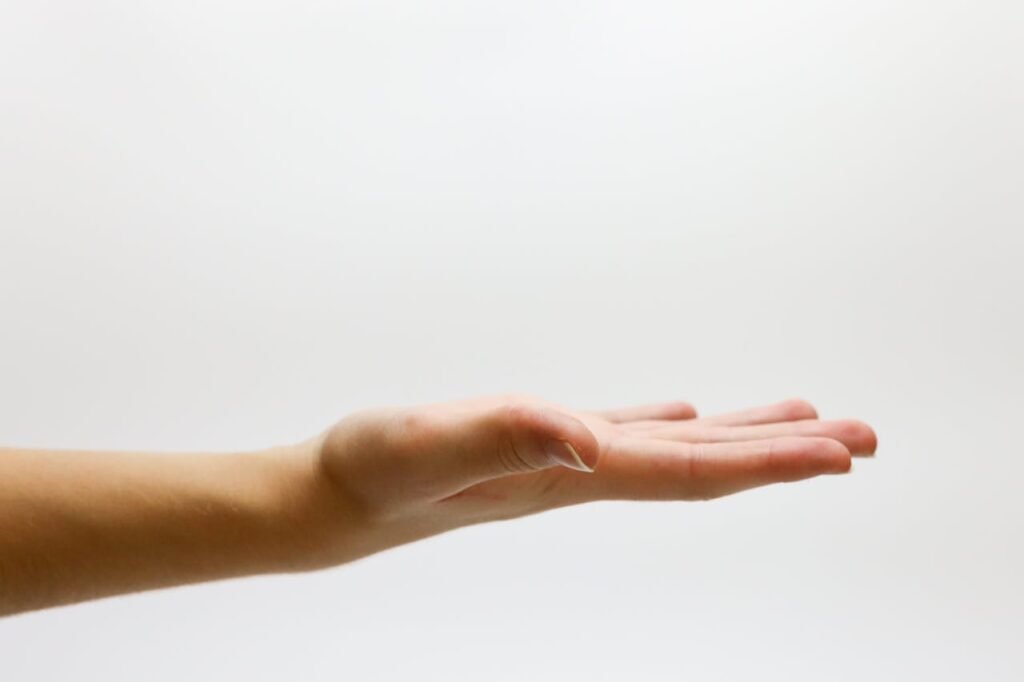Losing part of a finger might seem small compared to losing an entire hand or arm. But anyone who has gone through it knows how deeply it changes daily life. Your fingers are not just for holding things—they guide, balance, and give you the fine control that makes even simple tasks possible.
When a part of your finger is gone, the challenge isn’t only about healing. It’s about understanding exactly what was lost, what remains, and how that shapes the next step—especially if you’re thinking about using a prosthetic.
This guide will walk you through the different levels of finger amputation, what each one means for function, and how it influences your prosthetic options. You’ll also learn practical tips to make sure you choose a solution that fits not just your hand—but your life.
Understanding Finger Anatomy Before We Begin
Why Knowing the Finger’s Structure Helps
Before talking about amputation levels, it’s important to know what’s inside each finger. Understanding the basic structure will make it much easier to see why losing one part affects movement in a specific way.
Each finger has three bones called phalanges—except the thumb, which has two. These are:
- Distal phalanx (the fingertip bone)
- Middle phalanx (the middle section)
- Proximal phalanx (the section closest to your hand)
These bones connect with joints that bend, straighten, and help you grip. Around them are tendons that pull for movement, nerves that bring sensation, and blood vessels that keep the finger alive.
When a finger is partly removed, the remaining joints, tendons, and skin determine how much natural function you still have—and what kind of prosthetic can work best.
Levels of Finger Amputation
Distal Phalanx Amputation
This is when only the fingertip is lost. The rest of the finger—including most of its length—remains intact.
Functionally, you can still bend and straighten your finger. You might lose some sensitivity or struggle with fine tasks like typing or picking up coins. But for most people, grip strength remains almost the same.
For prosthetic choice, many people in this category choose cosmetic silicone tips that match skin tone. They restore the natural look and protect the sensitive end of the finger. Some opt for mechanical fingertip prosthetics if their work involves precise handling, such as sewing or lab work.
Middle Phalanx Amputation
Here, the finger is removed between the middle and the tip. This shortens the finger enough to affect grip balance, especially when holding small tools or cups.
The loss of length means less leverage in the hand, so your grip might feel weaker or less secure. A mechanical partial finger prosthetic can help restore that length and improve stability. For people in technical trades, this makes a big difference in day-to-day work.
Proximal Phalanx Amputation
This is closer to the base of the finger, meaning you lose most of its length. You still have the knuckle joint where the finger meets the hand, so movement from that joint can remain strong.
At this level, mechanical or myoelectric fingers become a practical option. These can be designed to match your natural finger length and shape, and they can give real grip function back. They’re especially helpful for tasks like carrying bags, driving, or using tools.
Multiple Finger Amputations
When more than one finger is removed—at any level—the challenge is not just about replacing what’s lost but also about restoring hand balance. Losing several fingers can make everyday movements feel awkward, even if the remaining ones are intact.
For prosthetic planning, this often means combining cosmetic and functional devices. Some people choose full partial-hand systems if many fingers are missing, especially from the middle of the hand.
Thumb Amputation
Although technically different from finger loss, thumb amputation is worth mentioning. The thumb makes up about half of your hand’s function. Losing it changes everything—from grip strength to the ability to pinch.
Prosthetic thumbs are often functional rather than purely cosmetic because their role in the hand is too important to ignore. Even a simple mechanical thumb can help restore a huge amount of independence.
How Amputation Level Affects Prosthetic Choices
Why Length Matters
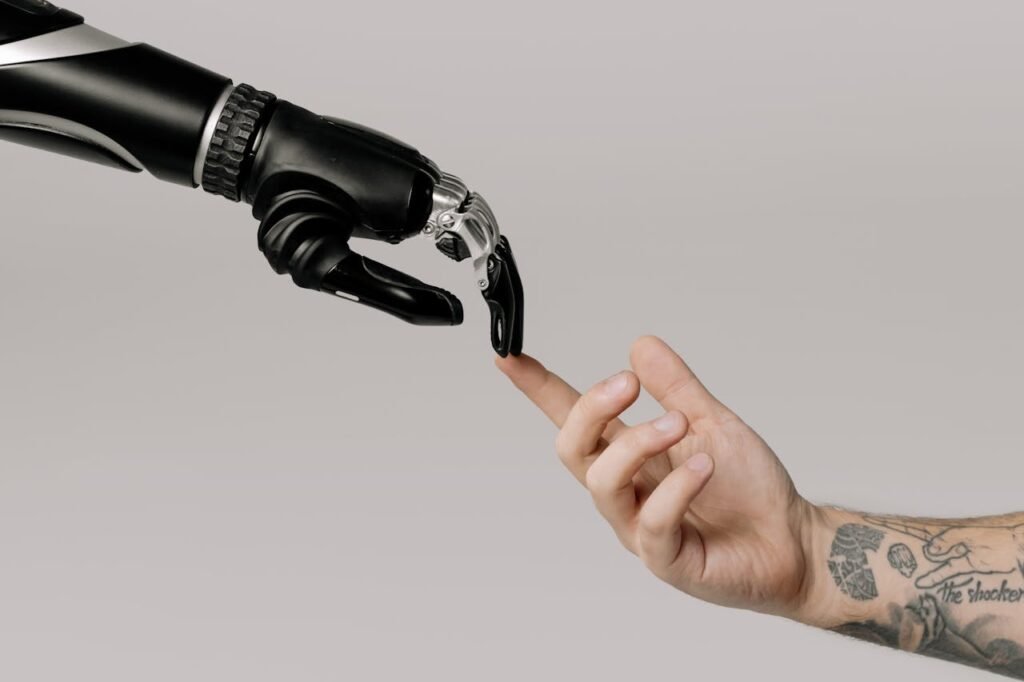
The more of your finger that remains, the more natural movement you can still use. This changes whether you need a fully powered prosthetic, a mechanical assist, or just a cosmetic cover.
For example, losing only the fingertip may not require complex movement support—just protection and a natural appearance. But losing most of the finger means you’ll need something that replaces both its length and its function.
Remaining Joint Mobility
If the joint nearest your hand is still there and working well, it can power certain types of mechanical fingers. These move when you move your hand, without needing electricity or batteries.
If you’ve lost joint function along with the finger, myoelectric solutions may be better. These use sensors to detect muscle signals in your remaining hand or forearm and move the prosthetic accordingly.
The Role of Daily Activities
The prosthetic you choose should match how you use your hands every day. Someone who works in an office might need typing accuracy more than grip strength. A carpenter will need the opposite.
At Robobionics, we always start with a lifestyle assessment. That way, you’re not just getting a prosthetic that fits—you’re getting one that works for your life.
Matching Prosthetic Technology to Amputation Levels
Distal Phalanx Amputation and Suitable Options
When the loss is only at the fingertip, most movement in the finger remains. The biggest challenge is sensitivity and the protection of the exposed end. In such cases, silicone cosmetic fingertips are often the simplest and most effective choice. They protect the area, restore the natural look, and reduce self-consciousness in social situations.
For people whose work demands precision—such as tailoring, laboratory work, or electronics—mechanical fingertip devices can help. These are small, lightweight, and designed to give a bit more control when pinching or pressing.
Middle Phalanx Amputation and Functional Support
With the finger shortened at the middle bone, you lose not only length but also leverage. Everyday grip feels less certain, and handling round objects like mugs or jars can be awkward. A partial finger prosthetic can restore the missing length and improve stability.
Mechanical designs work well here, especially if the remaining finger joint can still move. The prosthetic can extend your natural reach, making everyday tasks more comfortable and less tiring.
Proximal Phalanx Amputation and Restoring Balance
At this level, most of the finger is gone, but the base knuckle usually remains. This joint movement can power a mechanical finger, giving you an active grip without electronics.
If you need more advanced function or the knuckle movement is limited, myoelectric fingers become an option. They respond to muscle signals from your hand or forearm and can open or close independently. This can be especially useful for people who use their hands for work that requires repeated gripping or holding tools for long periods.
Multiple Finger Loss and Comprehensive Solutions
When two or more fingers are missing, the entire hand’s balance changes. The remaining fingers have to work harder, and certain grips become impossible. A custom multi-finger prosthetic can restore both balance and function.
Sometimes, a partial hand prosthetic with multiple moving digits is the best choice. These systems can be purely mechanical, myoelectric, or a combination. They help with everything from carrying groceries to using sports equipment.
Thumb Amputation and Priority Restoration
Without the thumb, gripping and pinching become almost impossible. This makes a functional prosthetic thumb a priority, not an option. Even a simple mechanical thumb gives a major boost to independence.
For higher performance, a myoelectric thumb paired with other mechanical or bionic fingers can restore the hand’s core capabilities. This is especially important for jobs or hobbies that rely heavily on dexterity and fine motor control.
Choosing the Right Prosthetic for Your Life
Considering Your Work and Hobbies
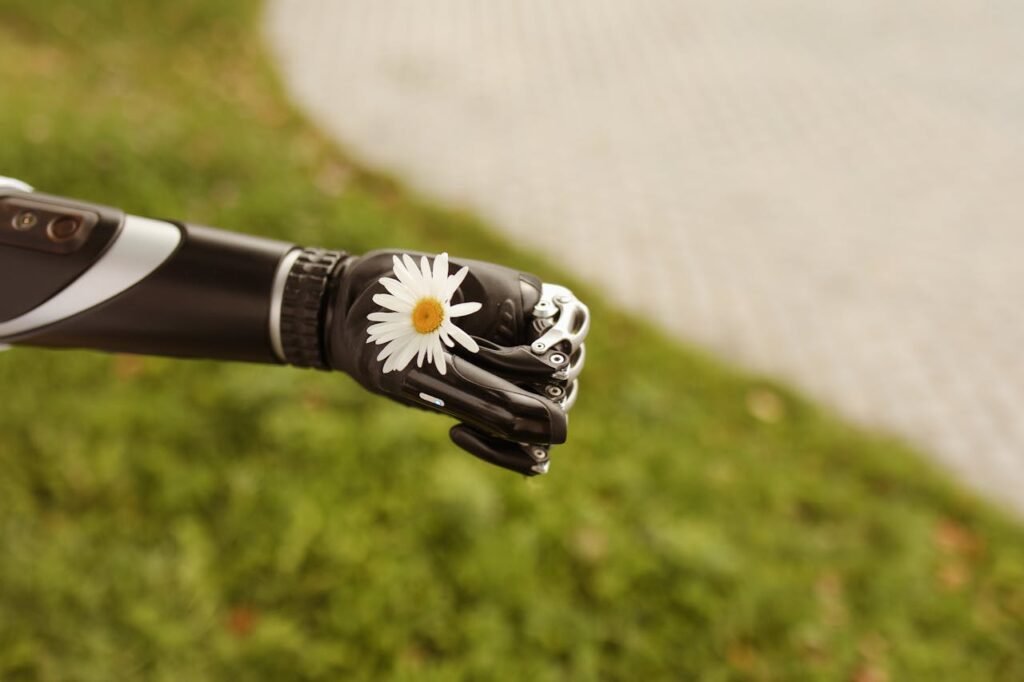
The right prosthetic is not always the most advanced one—it’s the one that matches how you use your hand daily. If your job involves computers, a slim, lightweight prosthetic with precision control is more useful than a heavy-duty grip. If you work in construction, you’ll need strength, durability, and easy maintenance.
We always start by asking detailed questions about your work, hobbies, and personal goals. This helps us narrow down the options to those that will genuinely help, rather than just look impressive.
Comfort and Long-Term Wear
No matter how advanced a prosthetic is, you won’t use it if it’s uncomfortable. Comfort comes from proper fitting, lightweight design, and materials that don’t irritate your skin.
Prosthetics for finger amputations are worn for hours at a time, so weight and ventilation matter. A good fit means you can forget it’s even there while you go about your day.
Maintenance and Service Support
Even the most durable prosthetic needs occasional servicing. Choosing a locally made option like the Grippy Mech Finger means parts and support are close by. You don’t want to wait weeks for repairs because the device needs to be sent overseas.
Regular servicing keeps the prosthetic smooth, clean, and responsive. It also ensures that your device is adapted if your needs change over time.
Training and Adapting with Your Prosthetic
The First Few Days of Use
Wearing a prosthetic finger for the first time feels different. You’ll notice the weight, the movement, and even the way your brain responds to it. Start with short sessions—just an hour or two a day—while doing light tasks.
This early period is about learning how the prosthetic responds to your movements. For mechanical devices, you’ll get used to how it grips when you move your hand. For myoelectric fingers, you’ll train your muscles to send clear signals.
Working with a Therapist
A therapist can guide you in using the prosthetic effectively and comfortably. They will teach you exercises that build muscle strength, improve grip control, and increase coordination.
Training can include activities like picking up coins, typing, holding kitchen utensils, or even performing light sports drills. These exercises help make the prosthetic feel like an extension of your body.
Making It Part of Your Routine
The real success comes when using your prosthetic becomes second nature. Wear it while cooking, at work, or when meeting friends. The more situations you use it in, the more skilled and confident you become.
It’s also important to adapt your environment. For example, changing the shape of your pen grip, using adapted kitchen tools, or adjusting your workspace height can make tasks easier while you’re still getting used to the prosthetic.
Overcoming Common Challenges After Finger Amputation
Adjusting to the Change in Hand Function
Even with a prosthetic, your hand will work differently than before. Tasks you once did without thinking—like fastening a button or holding a paper—might now require more focus. This can be frustrating at first, but patience is key.
The trick is to break tasks down into smaller steps and practice each one until it feels comfortable. Instead of rushing to do things at your old speed, give yourself time to master new techniques. Over time, your brain adapts, and movements start to feel more natural.
Managing Sensitivity and Phantom Sensations
It’s common to feel tingling, itching, or even pain in a part of the finger that’s no longer there. This is called phantom sensation, and while it can be uncomfortable, it usually lessens over time.
Desensitization exercises can help. These involve gently rubbing or tapping the residual part of your finger with different textures—like cloth, cotton, or soft brushes. The goal is to retrain your nerves and reduce over-sensitivity.
Some users find that wearing a well-fitted prosthetic also helps reduce phantom discomfort by giving the brain consistent sensory feedback.
Building Strength in the Remaining Hand Muscles
Finger amputation shifts more work to the rest of your hand and wrist. If you don’t strengthen these areas, you may feel fatigue or strain.
Exercises like squeezing a stress ball, using therapy putty, or practicing gentle wrist curls can keep your hand strong and reduce injury risk. Doing these daily helps you maintain endurance for work and daily tasks.
Long-Term Adaptation Strategies
Making Your Prosthetic Part of Your Identity

Some people hide their prosthetic. Others treat it like a part of their personal style. Either approach is fine—what matters is that you feel comfortable.
If you see your prosthetic as a tool that empowers you, you’ll be more likely to use it daily. You may even choose designs or colors that express your personality. For example, some Robobionics users ask for custom finishes that match their clothing style or work uniform.
Updating Your Prosthetic When Life Changes
Your needs today might not be the same in five years. A student may need a lightweight device for writing and typing, but later in life, they might need stronger grip for a more physical job.
The good news is that prosthetic technology is adaptable. You can upgrade to a more advanced version or add new components without starting from scratch. Keeping in touch with your prosthetist ensures your device evolves with your life.
Integrating Prosthetic Use at Work
Workplaces differ. Some jobs require precision; others need power. The key is to adapt your tools, workstations, and routines to your prosthetic.
If you work in an office, adjust your keyboard position and mouse settings to reduce strain. If you work in a workshop, choose gloves or safety gear that fit over your prosthetic comfortably. Communication with your employer can also help—they may be able to make simple changes that make a big difference.
Using Your Prosthetic in Daily Life
Cooking and Kitchen Tasks
Cooking can be a real test of hand function. Start with small, safe tasks—like washing vegetables or stirring ingredients—before moving on to cutting or lifting hot pans.
Adaptive kitchen tools, such as non-slip cutting boards or utensils with larger handles, can make cooking easier. Over time, you’ll develop your own tricks, like using the prosthetic to hold ingredients steady while your natural hand does the cutting.
Personal Care and Dressing
Buttons, zippers, and shoelaces can be challenging at first. Start by practicing with larger buttons and simpler closures before moving to smaller ones. For shoes, elastic laces or slip-on styles can save time.
For grooming, use electric razors, easy-grip toothbrushes, and hairbrushes with wider handles. Your prosthetic can help steady objects so your natural hand can work more effectively.
Sports and Recreation
Sports not only keep you active but also help you adapt to using your prosthetic in dynamic situations. Activities like swimming, cycling, table tennis, and even yoga can be modified to suit your abilities.
Some prosthetics have sport-specific attachments, but even without them, many activities are still possible. The main thing is to start slow, build confidence, and not be afraid to adapt the rules or equipment to make it work for you.
Emotional Well-being and Social Confidence
Handling Public Reactions
People may look at your prosthetic out of curiosity, not judgment. You can choose to explain it or simply continue with your day. Over time, you’ll find the approach that makes you feel most comfortable.
If you do decide to share your story, you might inspire someone who is facing their own challenges. Many Robobionics users have turned casual conversations into moments of education and empathy.
Connecting with Support Networks
Support from others who’ve been through similar experiences can be invaluable. Local amputee groups, online communities, and rehabilitation programs provide encouragement, advice, and friendship.
By joining these networks, you not only get help but also have the chance to help others—creating a cycle of support that benefits everyone.
Business and Workplace Opportunities in Supporting Prosthetic Users
Why Companies Should Pay Attention to Finger Amputation Recovery
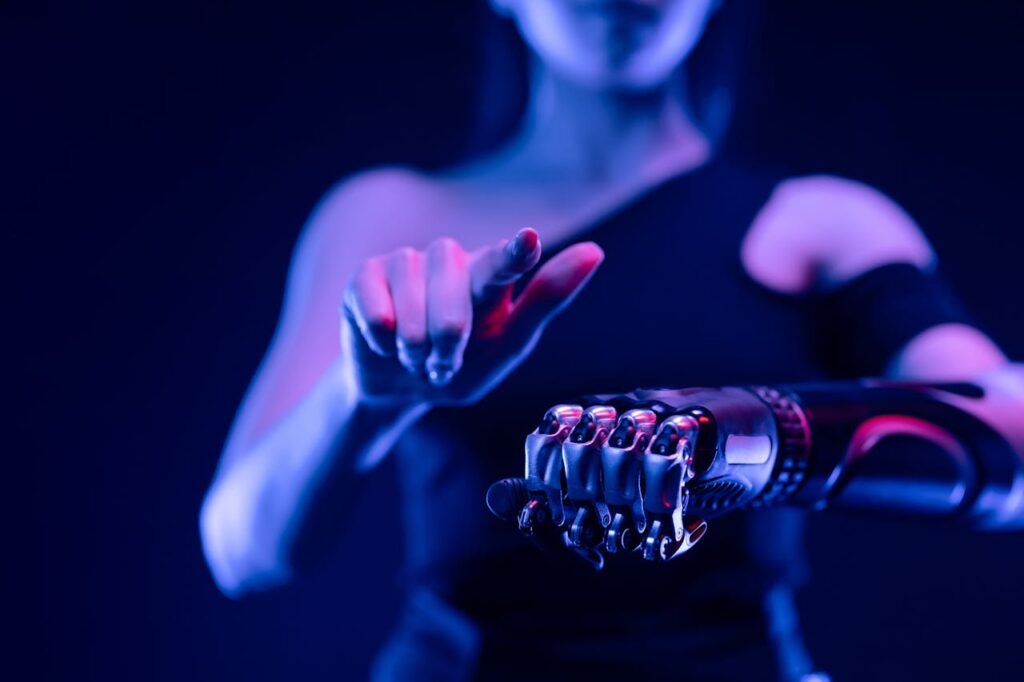
Finger injuries are among the most common workplace accidents in industries such as manufacturing, construction, agriculture, and logistics. While prevention is essential, injuries still happen. When they do, companies face not only medical costs but also the challenge of lost productivity and employee turnover.
By supporting employees in getting fitted with functional prosthetics, companies can dramatically reduce long-term disruption. Employees return to work faster, maintain their skill levels, and remain loyal to employers who invest in their recovery.
This is not just a human decision—it’s also a smart business move. Retaining skilled workers is often far more cost-effective than hiring and training replacements.
Integrating Prosthetic Support into Employee Benefits
A forward-thinking company can include prosthetic care as part of its health and wellness program. This could mean offering partial or full funding for prosthetics, partnering with providers like Robobionics for discounted rates, or organizing on-site assessments for injured employees.
Such programs don’t just benefit the injured—they send a strong message to the entire workforce that their well-being matters. This can improve morale, increase engagement, and strengthen a company’s reputation as a responsible employer.
Workplace Adaptation for Prosthetic Users
Beyond providing prosthetics, companies should look at how workstations, tools, and workflows can be adapted for employees with finger loss.
In a manufacturing setting, this might involve customizing tool handles for better grip. In an office, it could mean adjusting keyboards, providing ergonomic mice, or allowing voice-to-text software. Small changes can have a big impact on comfort, safety, and productivity.
Managers should be trained to support returning employees, focusing on ability rather than limitation. Creating a culture where prosthetic use is normal and accepted helps employees reintegrate faster and with more confidence.
Community Involvement and Social Impact
The Role of NGOs and Charitable Groups
Many people who lose fingers—especially in rural areas—cannot afford advanced prosthetics. NGOs can play a crucial role in bridging this gap by partnering with prosthetic makers to sponsor devices or run outreach programs.
At Robobionics, we work with NGOs to set up screening camps in villages, where residents can get assessed for prosthetic eligibility. These camps often uncover cases of long-neglected injuries where people have been living without proper support for years.
By stepping in, NGOs don’t just restore function—they restore livelihoods and dignity.
Corporate Social Responsibility (CSR) Initiatives
For companies, funding prosthetic programs can be a high-impact CSR activity. The results are visible, measurable, and deeply personal. A single prosthetic finger can mean a farmer can work again, a tailor can sew, or a driver can return to the road.
Businesses can partner with prosthetic providers to sponsor devices for accident victims in their local communities, aligning CSR with tangible change. Documenting and sharing these success stories can also inspire other companies to take similar steps.
Local Community Workshops
Community workshops that teach people about prosthetic options, care, and training are a powerful way to spread awareness.
In many places, people simply do not know that functional, affordable prosthetics exist. Workshops can demonstrate devices in action, explain costs and funding options, and connect people to providers. This kind of grassroots education builds trust and ensures that more people get help before it’s too late.
Strategic Partnerships for Greater Access
Collaborating with Hospitals and Clinics
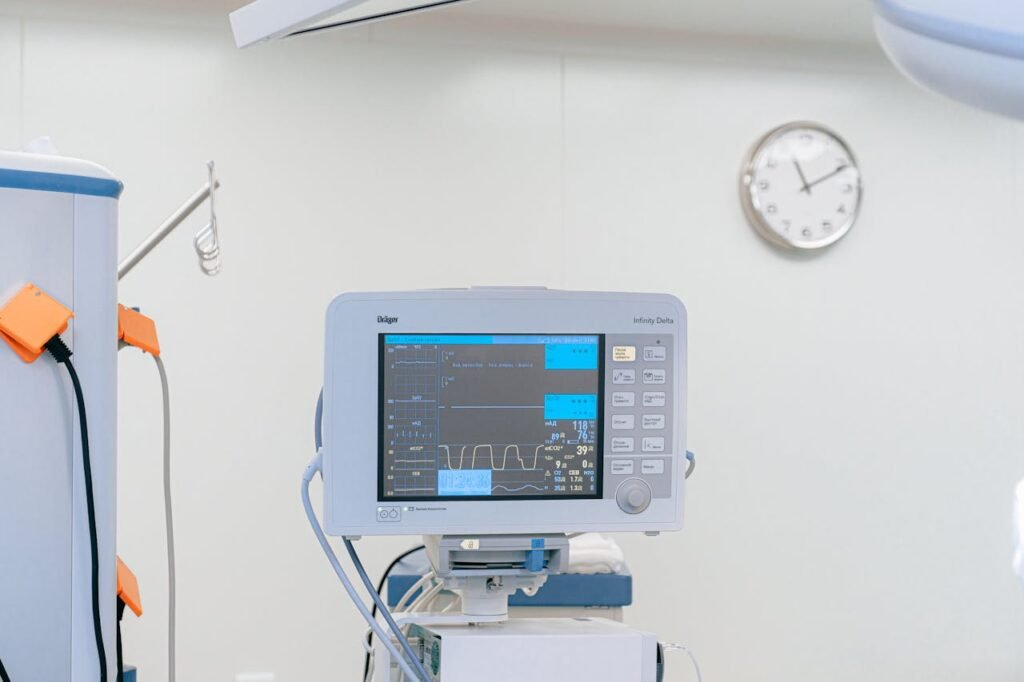
Hospitals are often the first point of contact after an injury, but many discharge patients without introducing them to prosthetic solutions. By partnering with hospitals, prosthetic providers can ensure that every eligible patient is informed about their options before leaving care.
We at Robobionics work with hospitals to set up referral systems, train rehabilitation staff, and even provide on-site fittings. This reduces delays and helps patients start their recovery journey with the right tools from the start.
Partnering with Rehabilitation Centers
Rehabilitation centers already have the expertise to train amputees in regaining strength and coordination. By integrating prosthetic training into these programs, centers can improve outcomes and help patients reach independence faster.
Joint programs where a prosthetic provider supplies devices and the rehab team handles training ensure that patients are supported on all fronts—physically, emotionally, and technically.
Government and Policy Collaboration
Local governments can also play a role in increasing prosthetic access by providing subsidies, creating public awareness campaigns, or integrating prosthetic coverage into health insurance schemes.
When providers, policymakers, and community organizations work together, they can remove the biggest barriers to access—cost, awareness, and availability.
How Robobionics is Leading Change in Prosthetic Care
Built for Indian Needs, Not Just Imported Standards
One of the biggest challenges in prosthetic care in India is the overreliance on imported devices. While many of them are high-quality, they are often designed for lifestyles, weather, and work patterns very different from those in India.
At Robobionics, we start from the opposite end. We look at the day-to-day realities of Indian users—whether they are farmers in Punjab, factory workers in Maharashtra, or students in Chennai—and design devices that work for them.
From the weight of the prosthetic to the materials used, every detail is tailored to withstand India’s climate, suit local clothing styles, and handle our diverse working conditions.
Local Manufacturing for Better Affordability and Service
By manufacturing 60 out of 64 components locally, we dramatically reduce costs without compromising quality. This allows us to price advanced prosthetics, like the Grippy Mech Finger or Grippy Bionic Hand, at a fraction of the cost of imports.
Local production also means faster service. If something needs adjustment or repair, we can fix it quickly, without waiting for parts to arrive from overseas. For users, this means less downtime and more consistent use.
Innovation with Purpose
We’re not here to make technology for technology’s sake. Every innovation we work on has a direct impact on function, comfort, and independence.
Our patent-pending Sense of Touch™ technology is a prime example. By giving users tactile feedback through their prosthetic, it restores not just movement but also awareness—helping them control grip pressure and interact with objects more naturally.
We also develop mechanical solutions, like the Grippy Mech Finger, that don’t rely on electricity but still offer powerful grip and ease of use. This ensures that even users without access to charging facilities can benefit from advanced prosthetic function.
Comprehensive Support, Not Just a Device
Getting a prosthetic is only part of the journey. Learning to use it confidently and integrating it into daily life is equally important. That’s why we offer training sessions, follow-ups, and even gamified rehabilitation through our custom app.
We also connect new users with experienced ones, creating a peer network that makes the emotional and practical transition smoother. Our goal is not just to restore a hand’s function but to help people rebuild their lives.
Partnerships That Multiply Impact
We actively partner with hospitals, rehabilitation centers, NGOs, and CSR initiatives to make sure our devices reach those who need them most. These collaborations allow us to serve people in rural and underserved areas who might otherwise never have access to advanced prosthetic care.
Through corporate sponsorships, we’ve been able to provide prosthetics to workers injured on the job, ensuring they can return to work and continue supporting their families.
Recognition and Trust
Robobionics is a DPIIT-recognized startup under the Startup India initiative and a finalist at the Extreme Tech Challenge. But the recognition that matters most to us comes from our users—the farmers who can hold tools again, the children who can write in school, the workers who can return to their jobs.
Each success story is proof that when technology is made with empathy and designed for real-world use, it can transform lives.
Final Thoughts: Choosing the Right Path Forward
You Have More Options Than You Think
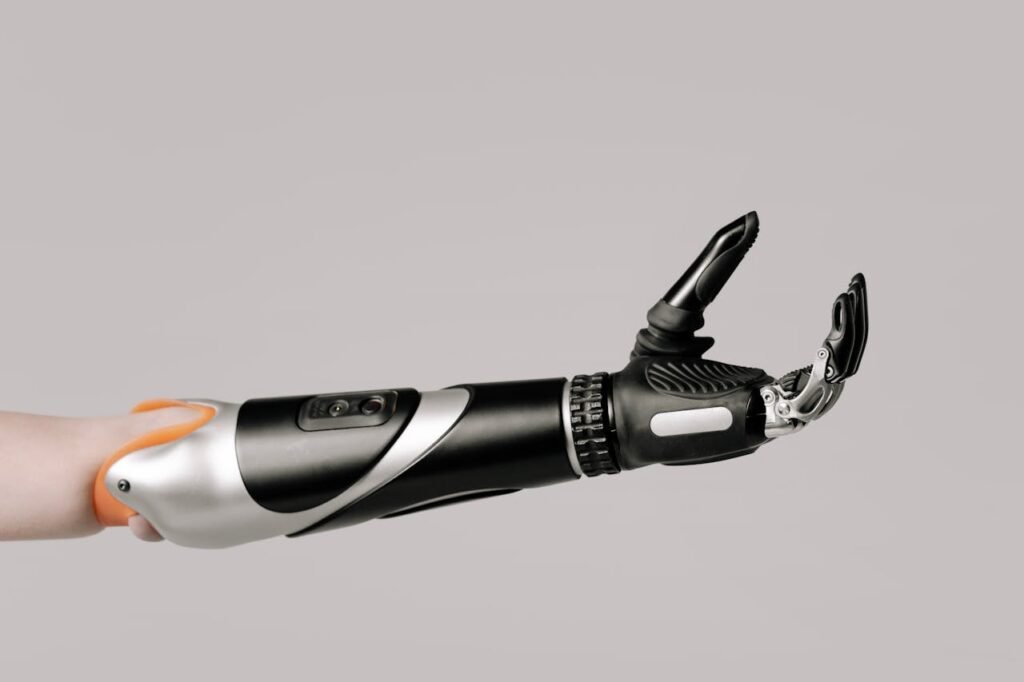
Many people assume that losing part of a finger means they have to give up certain activities forever. But the truth is, with today’s technology and the right support, you can regain far more function than you might imagine.
The key is to match your prosthetic to your specific amputation level, your lifestyle, and your personal goals. This is where expert guidance makes all the difference.
Your Journey Is Unique
No two amputations are the same, and no two recovery paths are identical. What works for someone else might not work for you—and that’s okay.
What matters is finding a solution that makes you feel capable, independent, and confident in every setting—at home, at work, and in public.
Robobionics Is Here for Every Step
From your first consultation to years after you’ve started using your prosthetic, we’ll be here. Whether you need adjustments, upgrades, or just advice, our team is committed to making sure your device works for you—not just on day one, but for the long haul.
If you or someone you know is living with finger loss and wondering what’s possible, we invite you to see it for yourself. Book a demo with us, try our devices, and feel the difference.
You can start here: www.robobionics.in/bookdemo
Your life doesn’t stop with finger loss—it changes, and with the right tools, it can change for the better. We’re ready to help you take that next step forward.



